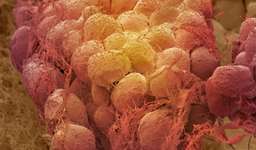
Tissue Viability Training
Cost: £6.00
Welcome to our Tissue Viability Training online Training. Upon completion, you will receive a certificate of completion. The course duration is approximately 1 hour and will earn you 1 CPD point. You have 6 months from the date of purchase to finish this training.This module covers various topics related to Tissue Viability Training online training module:
1. Introduction to Tissue Viability:
• Definition of tissue viability and its importance in healthcare
• Overview of the different types of wounds and their characteristics
2. Anatomy and Physiology of the Skin:
• Understanding the structure and function of the skin
• Identifying the layers of the skin and their role in wound healing
3. Factors Affecting Tissue Viability:
• Recognizing the risk factors that can lead to compromised tissue viability
• Understanding the impact of age, chronic conditions, and lifestyle on tissue health
4. Pressure Ulcer Prevention and Management:
• Identifying the stages of pressure ulcers and their associated risk factors
• Exploring evidence-based strategies for prevention, including regular repositioning and pressure redistribution devices
• Understanding the assessment and management of pressure ulcers, including wound dressings and treatment options
5. Leg Ulcer Assessment and Management:
• Differentiating between arterial, venous, and mixed leg ulcers
• Conducting a comprehensive leg ulcer assessment, including Doppler assessment for arterial ulcers
• Discussing appropriate management strategies, such as compression therapy and wound care products
6. Diabetic Foot Ulcer Prevention and Management:
• Understanding the pathophysiology of diabetic foot ulcers
• Identifying high-risk foot conditions and implementing preventive measures
• Discussing the assessment and management of diabetic foot ulcers, including offloading techniques and wound care principles
7. Wound Assessment and Documentation:
• Learning how to accurately assess wounds, including size, depth, and exudate
• Documenting wound characteristics using standardized tools and terminology
• Recognizing signs of wound infection and appropriate interventions
8. Wound Dressings and Products:
• Familiarizing with different types of wound dressings and their indications
• Understanding the principles of wound bed preparation and the use of topical agents
• Discussing the role of advanced wound care products, such as negative pressure wound therapy and biological dressings
9. Holistic Approach to Tissue Viability:
• Considering the psychosocial impact of wounds on patients' quality of life
• Collaborating with multidisciplinary teams to provide holistic care
• Promoting patient education and self-management to optimize tissue viability
10. Legal and Ethical Considerations:
• Understanding the legal and ethical implications of tissue viability care
• Ensuring compliance with local policies and guidelines
• Maintaining confidentiality and safeguarding patient information
The learning outcomes are:
1. Understand the concept of tissue viability and its importance in healthcare.
2. Identify the different types of wounds and their characteristics.
3. Describe the anatomy and physiology of the skin and its role in wound healing.
4. Recognize the risk factors that can lead to compromised tissue viability.
5. Understand the stages of pressure ulcers and their associated risk factors.
6. Implement evidence-based strategies for pressure ulcer prevention.
7. Assess and manage pressure ulcers effectively, including appropriate wound dressings and treatment options.
8. Differentiate between arterial, venous, and mixed leg ulcers.
9. Conduct a comprehensive leg ulcer assessment, including Doppler assessment for arterial ulcers.
10. Implement appropriate management strategies for leg ulcers, such as compression therapy and wound care products.
11. Understand the pathophysiology of diabetic foot ulcers.
12. Identify high-risk foot conditions and implement preventive measures.
13. Assess and manage diabetic foot ulcers, including offloading techniques and wound care principles.
14. Accurately assess wounds, including size, depth, and exudate.
15. Document wound characteristics using standardized tools and terminology.
16. Recognize signs of wound infection and implement appropriate interventions.
17. Familiarize with different types of wound dressings and their indications.
18. Understand the principles of wound bed preparation and the use of topical agents.
19. Discuss the role of advanced wound care products, such as negative pressure wound therapy and biological dressings.
We hope you find this module informative and beneficial for your professional development in Tissue Viability Training online training module.
If you need more information about this course, please contact Train Healthcare directly at 0208 3266 704 or email contact@trainhealthcare.com.
Please note that refunds are not available for online training purchases.
Nursing and Midwife Council's (CPD Points).
Requirements:
It is necessary to complete 35 hours (35 Nursing CPD Points) of relevant CPD within the three-year period since your last registration renewal or since joining the register.
Of these 35 hours (35 Nursing CPD Points), a minimum of 20 hours (20 Nursing CPD Points), should be dedicated to participatory learning, which involves engaging in activities that facilitate interaction with other professionals.

